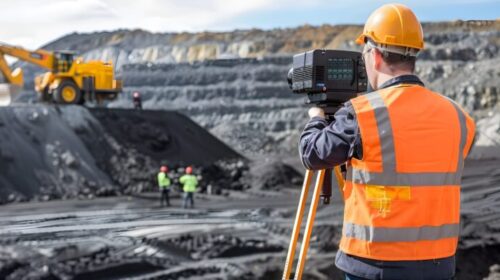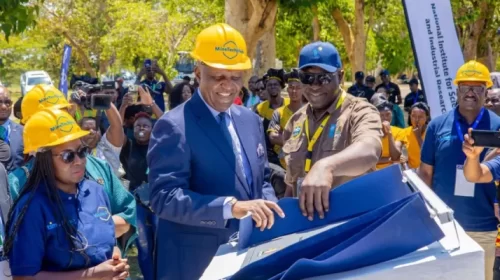Pushing technology boundaries in mineral processing
Technology offerings from FLSmidth – including significant advances in digitalisation – are helping to take mining into a more productive future.
According to Terence Osborn, FLSmidth’s director of product and account management for sub-Saharan Africa and the Middle East, technology is a vital pillar of the company’s status as a solution-provider in mineral processing.
“Due to the COVID-19 pandemic, mines have accelerated their take-up of technology that allows remote monitoring, control and process optimisation,” Osborn notes. “With our decades of product development in this space, we have been well placed to work with mines in these efforts.”
He highlights the company’s wealth of research and development as the lifeblood of new technologies, with over 80 such projects related to products and services for the mining sector. There is also continuous improvement of existing FLSmidth technologies.
Digital future
Central to progress in the digital space is FLSmidth’s ECS/ControlCenter cybersecure platform connected to an internet cloud solution. This is a versatile interface between the company’s equipment or process and data storage in the cloud, where detailed analysis can be conducted.
The ECS/ControlCenter V8 process control platform sits at the heart of FLSmidth’s digital vision, a key component in its growing portfolio of digital solutions and services called ENABLR.
Read more about FLSmidth
“ECS/ControlCenter, complemented by FLSmidth’s structured implementation approach, gives customers a structured data foundation which is the fuel enabling effective advanced optimisation technologies, i.e. data analytics, machine learning and artificial intelligence.
“Once the data is uploaded, our SiteConnect app can visualise the performance of equipment and process plants in real time on any smart device,” he says.
“For instance, we have a REFLUX Classifier modular plant on a customer site where we can view production data on demand and in real time. We can track over 100 different operational parameters from the plant, and can see data trends over time – from hours to weeks.”
Condition monitoring also becomes easier with these technologies, which can be customised to report on each piece of equipment’s key operating parameters.
An example is in the performance of hydrocyclones, especially measuring underflow characteristics. To identify when roping occurs – a condition where underflow is constrained, and separation efficiency reduced – FLSmidth developed their SmartCyclone technology. A sensor in the spigot detects the condition, based on thresholds levels, and sends a signal to trigger an intervention.
Value of data
“Despite the perception that mining is often behind the curve in applying new technology, the sophistication of the sector’s control systems and the amount of data already available is vast,” Osborn says.
“Most of the data required to make decisions remotely is in fact already there. Where there are gaps, we are working with customers to fill these by trying to identify which is the key data required for decision making and to develop solutions around this data.”
Machine-level solutions like this are offered as part of FLSmidth’s broader control packages, which operate at plant control level or even at advanced process control level.
Advanced process control solutions like FLSmidth’s ECS/ProcessExpert system, takes control a step further allowing continuous advanced optimisation enabled by latest state-of-the-art AI technologies.
“The beauty of our control systems is that they are flexible to customer requirements,” he says.
“Where customers have their own advanced control systems already installed, we can tie our machine-level control systems into these with our extensive expertise in software engineering and machine control.”
Advancing separation
Optimising separation efficiency has long been a special area of focus for the company with a focus on leveraging the value of lamella plates in separation, FLSmidth has been researching other applications of this feature.
“The lamella plates provide the customer with another opportunity to recover entrained material that has been misplaced in the separation circuit,” Osborn says.
“We have therefore applied lamella plates in a flotation cells, and already have this innovation under test in a commercial application – for recovery of very fine coal.”
The company is also looking at the potential of a ‘hybrid’ of a flotation cell and REFLUX Classifier, constantly pushing the boundaries in separating minerals from waste. While flotation is a well-established process, there is scope for a step-change in this field, says Osborn.
Dry grinding
As concerns of water conservation grow in water-scarce countries – one of which is South Africa – so there has been steadily more interest in dry comminution.
With milling being a significant water consumer, FLSmidth has applied its vertical roller mill – developed for use in the cement sector – to mining applications.
The company has installed a pilot unit at its mineral testing research centre in Salt Lake City to begin application testing.
“The big difference is that minerals are more abrasive, so a number of adaptations were necessary,” he says. “This mill reduces material to fine particle size, even to mineral liberation level and uses a similar principle to that of high pressure grinding rolls.”
In other innovations, FLSmidth continues to extend wear life in its pumping and gravity concentrator equipment through the application of new wear-resistant polymers. It also grows its reference base of composite liners – combining rubber and steel – for better wear life and power-saving in grinding mills.
50 total views , 1 views today





